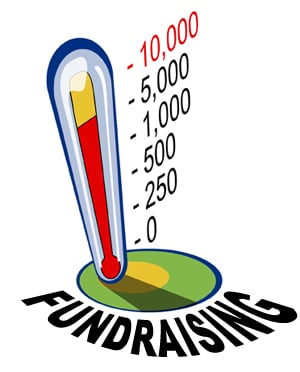 5. Timing is critical—it’s not just an expression
5. Timing is critical—it’s not just an expression
The mail is especially cluttered at the end of the fourth quarter. Unless your communication offers an opportunity for a year-end tax break or a unique holiday function, that may not be the time to compete for attention. Depending on your target audience, April tax-time might be a difficult time to be noticed. The month of August when people are finishing vacation and getting children ready for school is also not the best time of the year to grab people’s attention. Finally, during election years, in the days and weeks running up to an election, the flood of campaign collateral headed to printers, mail houses and the postal service intended for businesses and homes can delay every step of your project and impact its impression on your target audience.
6. Your budget is your friend
Being familiar with the budget your organization has established for a particular project makes all the decisions associated with it easier and the production process much smoother. You can quickly determine if you can afford professional design services. You will know if you can swing an elaborate print job or need to find a simple solution. (That information will save design time and prevent rework, too.) If your mailing list is ready when the project begins, you can send it to us to determine what your postage cost will be and savings you might incur by having your mailing labeled and barcoded. By establishing a realistic budget for your project, you will avoid frustration, delays and disappointment on the part of your organization and your vendors. Providing that information to your designer at the beginning of the project will avoid a design that you can’t afford to print or mail.
7. Great printing will let your project shine
It’s important to remember to get multiple quotes on a project. If the printer knows you’ve put the project out to bid to several people, you’ll be sure to get a price that they feel is competitive. Every printer isn’t right for every job. Some specialize in small offset jobs, like stationery, business cards, and small brochures in smaller quantities. Others are more competitive in big print runs or in large format pieces like booklets or maps. Ask other organizations which printers they’ve used successfully. Ask the printer directly about the areas in which they are most competitive. It’s normal to fall into a comfortable relationship with vendors, but you do need to make sure you’re aware of market prices and whether or not your job and a particular printer are a good match.
Make sure your ink and paper choices support your goal and fall within your budget. As consumers, we get so used to seeing full-color mailers that we sometimes forget that a well-designed one- or two-color project can stand out in the sea of junk we sort through every day. Talk to your printer and designer about the best approach. Is there an attractive way to design the piece in one or two colors? Is there a paper that’s less expensive but will do a quality job? Don’t be afraid to ask questions until you’re satisfied that you’ve found the best combination of creative, cost and quality. One- and two-color print work also reflects a commitment to good stewardship of the funds you solicit, although there are times when a full color job is completely appropriate.
8. Mailing can make or break your project
Talk to us early in your process about postage costs so there aren’t any surprises. You may need to create a mock up of your final piece, using the chosen paper and envelope size, to take to the post office or mail piece consultant to determine your final per piece mailing cost. Unusual sizes, heavy paper, inserts and color envelopes are all complicating factors that can add and processing time and mailing expense to your project.
9. Testing and Return on Investment (ROI) leads to future success
Testing the effectiveness of your direct mail campaigns is very important. Unfortunately, a true testing process (sending out variations of a message and tracking their effectiveness) isn’t usually in the budget for small organizations. But you can be sure that the largest organizations and businesses have done serious testing. So pay attention to what they are sending out and learn from them. Don’t plagiarize, just notice how and what they say and the creative that supports the message/offer. And use the techniques you see to guide your own choices. Start a collection of pieces that come from the big guys in the non-profit world and large businesses.
Tracking your return on investment is easier. Keep detailed notes on what you spent for every phase of development in the project, including the man hours within your organization. Then, track the donations and sponsorships that are directly related to the direct mail campaign. Having clear goals for each project/campaign and determining whether donations and sponsorships met your goals and exceeded your expenses is critical. Tracking this information for each project over time will help you determine the best processes, effectiveness and your return on investment and help guide you in future projects.
Direct mail campaigns are an important part of any non-profit‚Äôs communication strategy. By developing clear goals, realistic budgets and allowing ample time for research, development and trouble shooting, you greatly increase the odds for a successful campaign. And you can enjoy the process!{{cta(‘8d059717-3bf6-41aa-a878-af729f5ccb74′,’justifycenter’)}}
